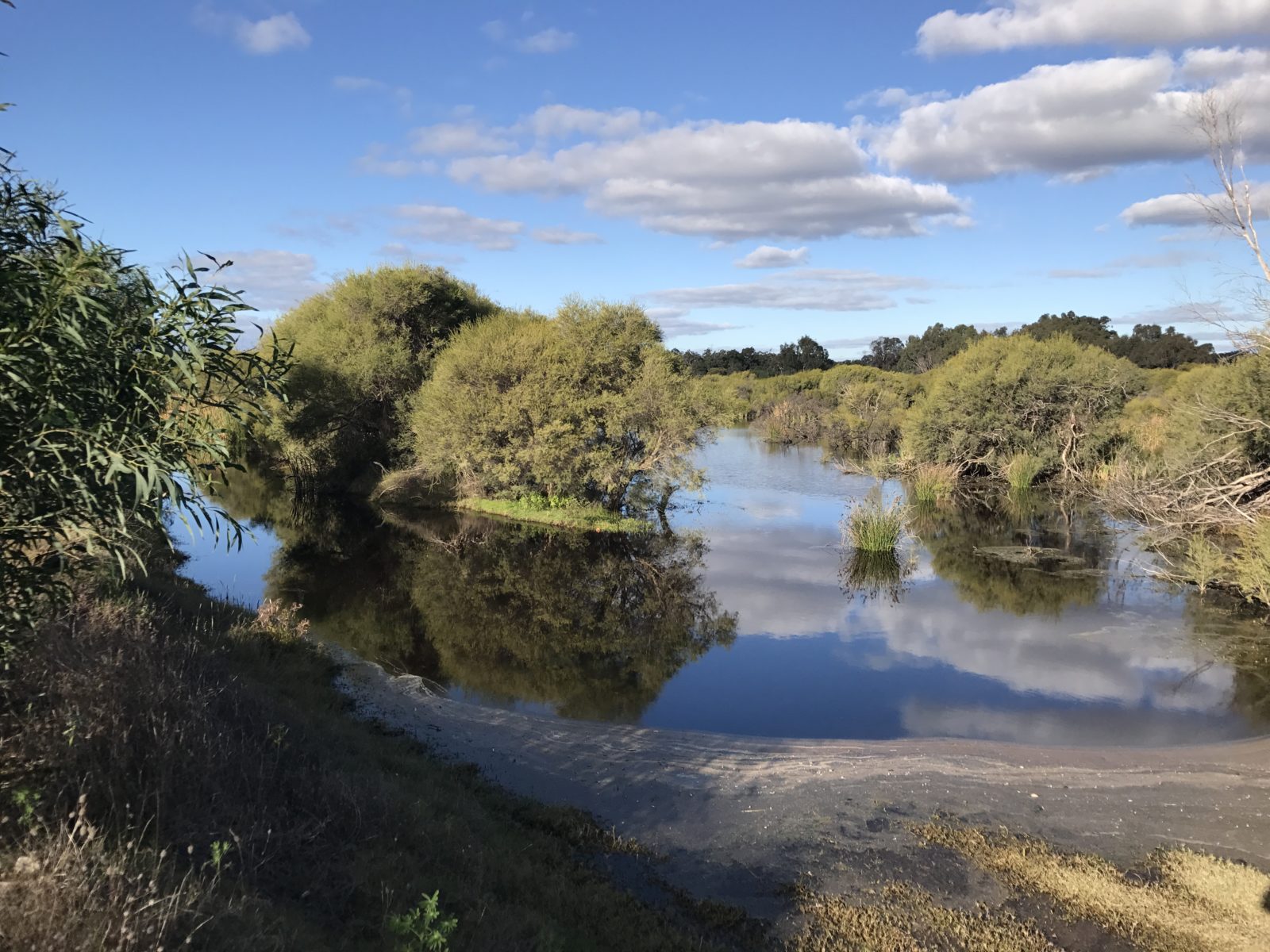From research to action (Part 2)
Reflecting on knowledge gained since 2012: how to plan urban spaces
Earlier this month, we presented some examples from Program A (Society) and its insights into the social drivers of and barriers to creating water sensitive cities – like how people value and use water, their knowledge of urban water issues, and how to create support for innovative and sustainable water management.
Now, we turn the spotlight onto Program B and its discoveries in Water Sensitive Urbanism.

Shaping the city catchment
Indeed, while Program A focussed on stakeholder buy-in and behaviour change, Program B (Water Sensitive Urbanism) sought to better understand a city’s physical systems and place sustainable water management at the very centre of urban planning. With climate change creating a high likelihood of increased temperature and rainfall extremes, Program B asked: “How can we design the built environment of houses, roads, parks, gardens, green spaces, and productive urban landscapes to maximise flood resilience, and capture and use available rain to create temperate, liveable conditions for residents?”
High summer temperatures take a toll on the health of city-dwellers, and extreme heat events cause heat-related illness and increase mortality rates among vulnerable urban residents. One project (B3.1) examining the link between urban infrastructure and heat retention confirmed that Australian cities are often hotter than surrounding rural areas due to the urban heat island effect created by the impervious surfaces of roads and buildings and a lack of healthy, well-watered vegetation to produce evaporative cooling. An examination of data on hospital admissions during heat waves showed that cities have particular temperature thresholds that, once exceeded, lead to significant increases in heat-illness and death, especially in elderly and less mobile residents living alone.
To address this issue, a team led by Monash University’s Professor Nigel Tapper, in partnership with the National Climate Change Adaptation Research Facility (NCCARF), produced a mapping tool to create “vulnerability maps” for individual cities that identified specific suburbs and areas of high vulnerability during extreme heat events. The maps have several benefits. In the short term, they can be used to plan responses to heat events in known vulnerable areas; in the longer term, they can be used to prioritise such areas for preventive measures such as creating additional shade by planting trees, installing green roofs or walls, and using locally harvested stormwater to maintain healthy vegetation and cool the air by evapotranspiration.
Indeed, the impact of irrigating even just ground-level vegetation can be significant: during hot conditions, the surface temperatures of irrigated vegetation can be up to 20°C cooler than non-irrigated vegetation, and air temperatures up to 2.5°C cooler. The work demonstrated that water sensitive urban design incorporating popular green spaces and shade-bearing trees not only provides a liveable environment but reduces public health costs incurred from temperature-related illness. According to Prof. Tapper, even a small change can make a big difference. “We found that reducing temperatures by only 1–2°C can save lives; the vulnerability maps make it possible to focus effort on the areas where residents are most at risk,” he said.
Irrigation to improve evaporative cooling is not the only incentive for harvesting urban stormwater runoff. Any large volume of water that cannot permeate the ground, and therefore floods natural waterways, poses a serious threat to stream ecology. Streams flooded by stormwater are swamped by nutrients, other pollutants, and sedimentation that impact on biodiversity. Changed hydrology is considered to be the main driver of “urban stream syndrome”, the degradation of natural waterways in built-up areas.
But can stormwater be managed to protect urban waterways? East of Melbourne, that question was tested via a large-scale restoration project at Little Stringybark Creek as part of Project B2.1. To reduce the severe impact that urban stormwater runoff had had on this creek, the creek and its three tributaries were fitted with a large number of water harvesting and infiltration systems (raingardens) across the catchment to mimic the conditions of ecologically healthy streams.

A related B2.1 study comparing catchments with similar rates of imperviousness (5–10%) showed that streams in good ecological condition, for instance, where stormwater is filtered by tree-covered hills, experience considerably less hydrological impact from runoff than catchments with poor stream ecology. The study indicated that stream condition in urbanised areas can be effectively protected by harvesting sufficient runoff throughout the catchment and treating discharged water to appropriate levels to prevent stream pollution, resulting in a win-win for the environment and the residents benefitting from access to the additional harvested water.
Excess water has other impacts, too, and the flooding of residential areas is a scenario that plays out frequently in Australia. Large parts of Brisbane were inundated in 2011, and coastal suburbs in Sydney and Melbourne were severely damaged as recently as 2017. How to build resilience to floods and minimise damage to people and infrastructure was therefore another important theme addressed by Program B.
Project B4.1, for instance, set out to develop a series of tools that identify and map hydrologic hazards (such as sea surges, extreme rainfall, or high groundwater tables), and which facilitate flexible land-use planning that accounts for such hazards while incorporating better drainage systems. A comparison of water sensitive urban design in Melbourne with an equivalent approach in Copenhagen, Denmark, focussed on modelling stormwater runoff from urban areas, where insufficient space for water to drain is a common issue. The resulting models account for varying surface types – across both pervious and impervious areas – enabling flood mitigation to be planned accordingly.
Further afield, test cases in Australia, the Netherlands, the United Kingdom, and Vietnam looked at building flood resilience (Project B4.2), with the varied social and technical contexts of overseas places yielding diverse perspectives and a richer, more refined bank of knowledge for adaptation approaches in Australian cities. A shared aim of these projects was to produce efficient and cost-effective options for flood-risk management strategies to reduce pressure on water budgets. Such efficiencies can be achieved by integrating (“mainstreaming”) flood-risk adaptations into decision-making across a range of policy areas.
To put that capacity within reach, a report by the CRCWSC and the UNESCO-IHE Institute for Water Education recommends a series of six, user-centric steps to follow when considering mainstreaming to achieve flood resilience. This document draws on case studies across Europe and the United States to provide clear guidance to policy-maker, planners and project managers on how overseas approaches could be implemented for success in Australia. From developing a vision to identifying opportunities for mainstreaming, the report emphasises the importance of sharing both successes and failures encountered while implementing mainstreaming methods so that learnings can be incorporated in the future.
Nicola Markus for the Mind Your Way team.